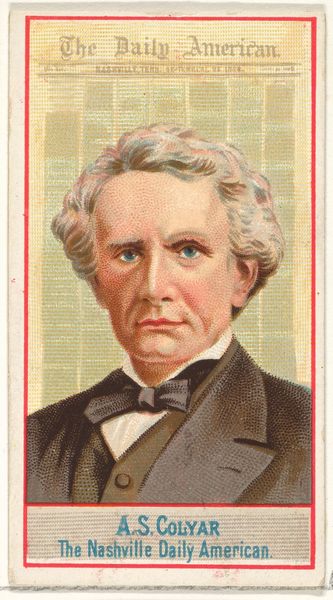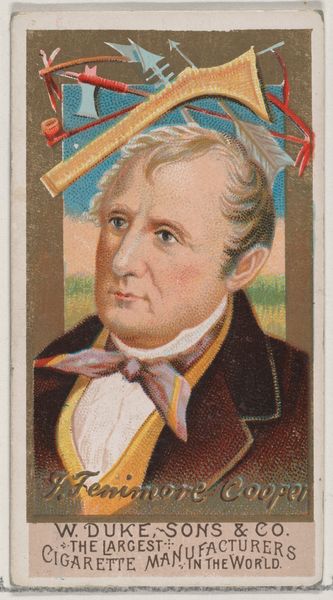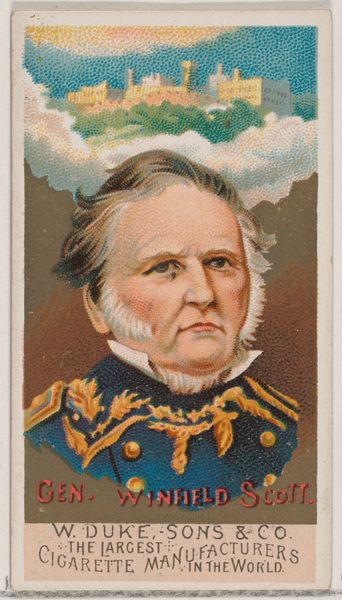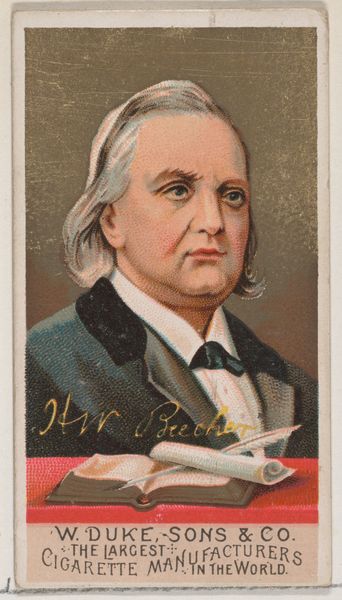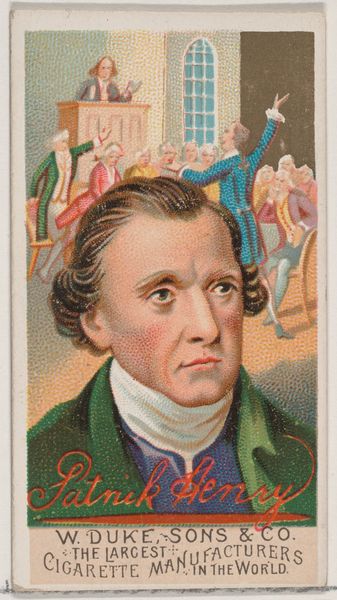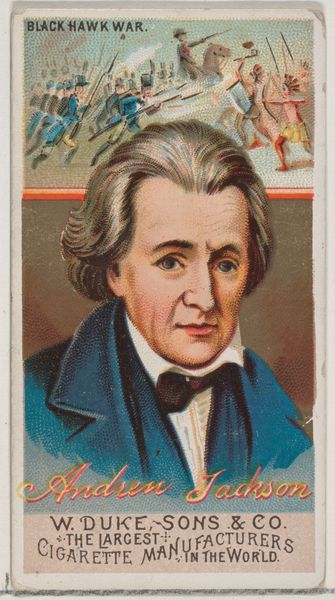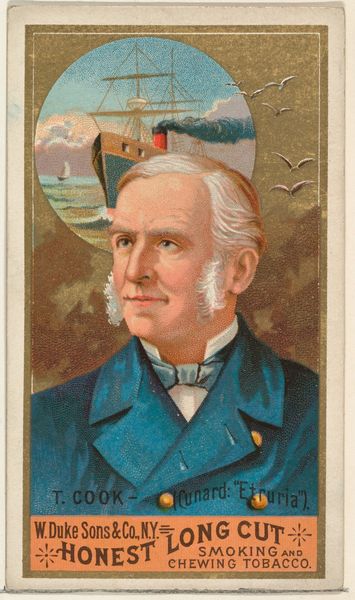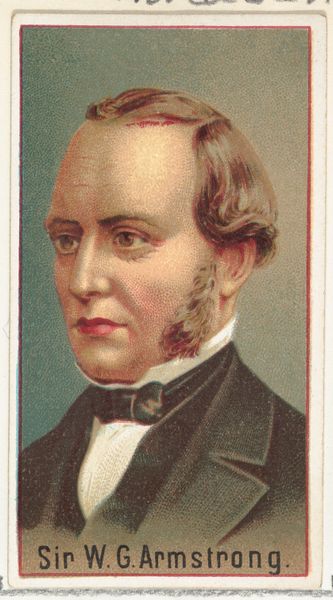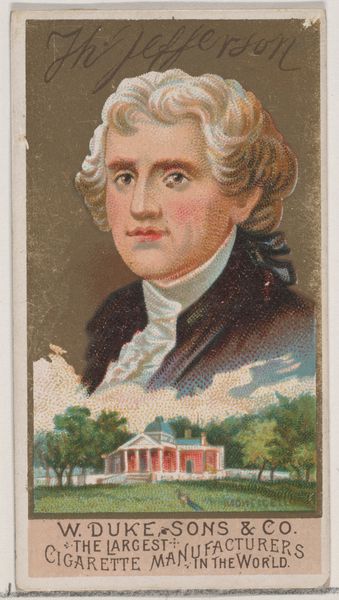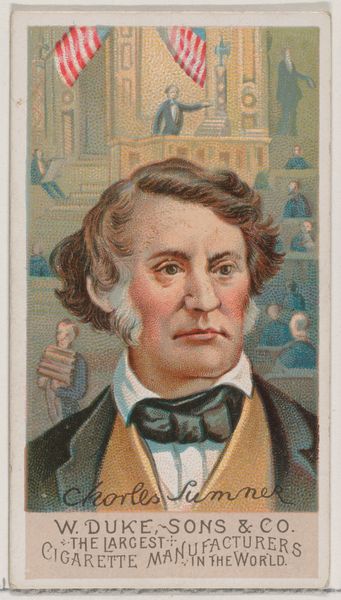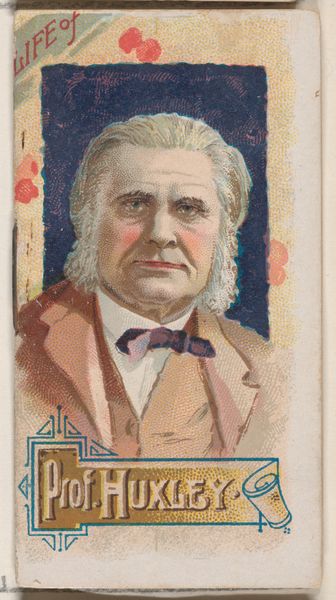
Henry Clay, from the series Great Americans (N76) for Duke brand cigarettes 1888
0:00
0:00
drawing, print
#
portrait
#
drawing
# print
#
caricature
#
men
#
portrait drawing
#
history-painting
#
academic-art
#
portrait art
Dimensions: Sheet: 2 3/4 × 1 1/2 in. (7 × 3.8 cm)
Copyright: Public Domain
Curator: Here we have "Henry Clay, from the series Great Americans" produced around 1888 by W. Duke, Sons & Co. It’s a printed drawing, one of a series of cards distributed with Duke brand cigarettes. Editor: The composition is immediately striking. Clay's face has this gentle yet shrewd look, framed by a stark red backdrop that makes him really pop, almost aggressively. The combination of the historical portrait with what reads as tobacco branding gives the piece a distinct feeling of American commodity fetishism. Curator: Indeed. These cards served a dual purpose: to stiffen cigarette packs and to act as miniature advertisements. The "Great Americans" series reveals how national identity was being marketed, even constructed, in this period of burgeoning consumer culture. Editor: Look at the imagery at the bottom beneath Clay's name – an axe, and what looks like perhaps bundles of tobacco. There's definitely symbolic weight here. An axe representing work ethic or pioneer spirit perhaps. It really clashes with the smoothness of the typeface. Curator: Precisely! These were potent symbols linking Clay to ideas of American progress. He was a major figure in early 19th-century politics, a senator and Secretary of State known as "The Great Compromiser". Aligning him with consumer goods made a subtle but persuasive statement about what constituted American greatness. It certainly democratized portraiture, and the branding made these artworks extremely widespread and accessible. Editor: There’s a dissonance I can't ignore between the high-minded imagery associated with Henry Clay's reputation, and the overt commercialism of the cigarette brand itself. It's a strange blend of civic duty and commercial imperative. A sort of industrial age reinterpretation of ancient totems, I'd say. Curator: The series tells us volumes about how societal values get woven into the fabric of commerce, particularly mass-produced goods, during that pivotal time. They blur lines between political idealism, fame, and tobacco consumption in ways that are still culturally relevant. Editor: So, while it seems at first glance to be simply a portrait in a rather blunt style, "Henry Clay" encapsulates the complicated symbology inherent in merging national heroes with consumerism. Curator: Yes, a compact study on how public image is manufactured. Editor: An early icon for our ongoing image-obsessed world, then.
Comments
No comments
Be the first to comment and join the conversation on the ultimate creative platform.
